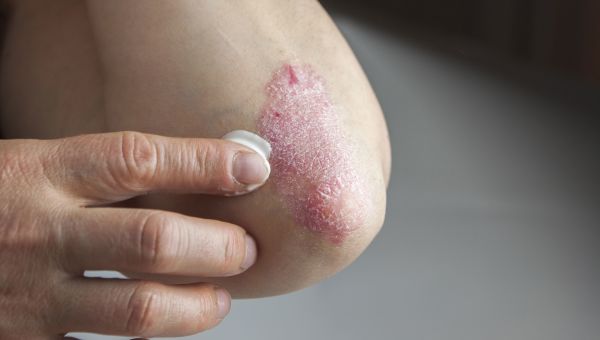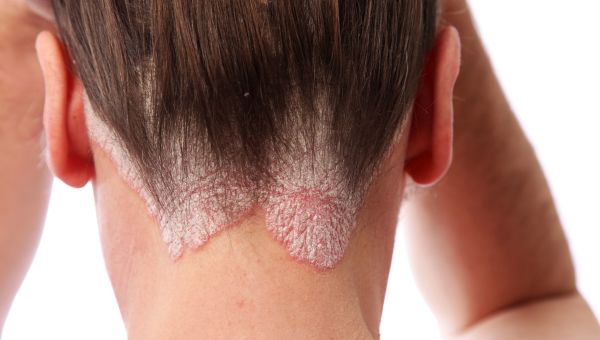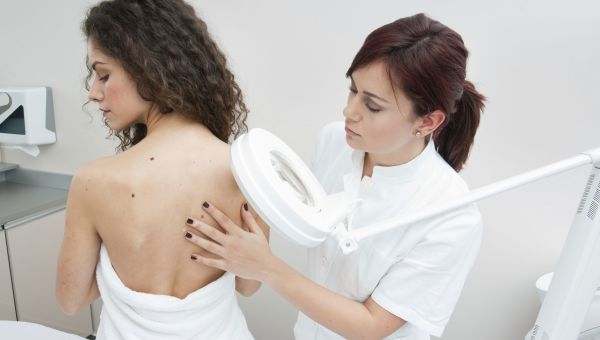All-access guide to five common skin conditions
Get to the root of common skin disorders, including triggers, treatment and more.

Your skin—the body’s largest organ—acts as a barrier to the environment, which limits the passage (inward and outward) of water and other substances. But that’s not all. Your skin also protects against bacteria and viruses, ultraviolet radiation and more.
Needless to say, keeping your skin healthy is important. Sometimes, skin conditions—characterized by dry patches, redness, swelling and small bumps, among other things—can affect this important barrier, for a number of different reasons. Many of them are out of your control.
Although many skin conditions resemble one another, they’re not the same. In fact, the triggers and treatments for common, chronic skin conditions, like eczema and psoriasis, vary widely.
We spoke with Brian Cha, MD, PhD, medical director of dermatology at IHA, part of the Saint Joseph Mercy Health System, about some things to know about common, long-term skin disorders, including causes, diagnosis and treatment options.

Eczema
This long-term, non-contagious skin condition typically appears as dry, itchy, red patches of skin anywhere on the body, but most commonly on the face, hands, arms and legs. The exact cause of eczema is unknown, but experts believe the condition has both genetic and environmental components. Dry skin, bacteria and an overactive immune system may also play a role.
No specific tests are available to diagnose eczema, so doctors rely on physical exams and medical history, and may test a sample of skin to rule out other conditions. Eczema is incurable, but not untreatable and symptoms also often diminish over time. If symptoms do persist, “avoiding long, hot showers, using mild soaps and moisturizing regularly with thicker moisturizers can go a long way toward keeping this condition under control,” Cha says. Topical and oral medications also available, as well as light therapy, if symptoms are more significant.

Psoriasis
Although this chronic, non-infectious condition also causes itchy, red patches, it’s not the same as eczema. Psoriasis is characterized by an abundance of skin cells that rise to the skin’s surface at a much faster rate than those without the disease. Certain triggers can spark or worsen psoriasis, “including dry, cold weather or air, as well as friction, pressure or irritation to the skin, which should be avoided when possible,” Cha says.
To diagnose psoriasis, your doctor will evaluate your skin, symptoms and family history—as psoriasis is considered an inherited condition—and may biopsy a small portion of skin to confirm the diagnosis or rule out another disease. Although treatment options are available, one study revealed up to 50 percent of people with mild cases of psoriasis aren’t being treated. Gentle skin care is important for reducing symptoms, and might be supplemented with topical medications, pills, injections or light therapy. Psoriatic arthritis—a condition characterized by inflammation of the skin and joints—can also occur in patients with psoriasis, and requires evaluation by a physician.

Seborrheic dermatitis
Known for affecting the scalp with scaly, red patches and dandruff, this common skin condition may also appear on the face, chest and back. The cause has not been clearly established, although it is thought that naturally occurring yeast on hair-bearing and oily areas of the skin may contribute. One form of this condition is common among babies and called “cradle cap,” but should disappear between six months and one year. Adults with seborrheic dermatitis may struggle with this condition chronically.
Symptoms may disappear and reappear throughout a person’s life, and are often triggered by changes in weather or stress. In addition to a physical examination and evaluation of symptoms and family and medical history, your healthcare provider may biopsy a patch of skin to rule out other conditions.
Regularly washing hair and skin with products free of alcohol, using medicated shampoos and topical lotions can reduce frequency and severity of symptoms. Many over-the-counter products can be effective for milder forms of this condition.

Keratosis pilaris
This harmless skin variation, in which small bumps or dry rough patches form on the upper arms, cheeks and thighs, is neither curable nor preventable. The underlying cause of keratosis pilaris is a buildup of keratin—a protein that works to protect your skin. It often runs in families and may worsen in the winter. Fortunately, it usually doesn’t need treatment, and when it is bothersome, certain over the counter and prescription lotions can help. Over time, keratosis pilaris may fade or clear up completely.
If you think you have keratosis pilaris, you probably don’t need to rush to the doctor. Your dermatologist will be able to diagnose the condition by looking at the affected skin.

Rosacea
Rosacea is a chronic condition—affecting mainly adults—that causes redness of the face, and sometimes acne or swelling. Frequent flushing—reddening of the skin, often with a warming sensation—is characteristic of those with the condition. Although it may present like a rash, with inflammation, rosacea is not an allergic reaction, nor is it dangerous or contagious. Experts believe there may be a genetic component to this condition.
Symptoms can also be triggered by other factors. “For acne and rosacea, certain hormones and environmental factors can trigger worsening of the condition,” Cha says. “Sun and heat are known to be common triggers for rosacea, but spicy foods, alcohol and caffeine can also cause flares for some people,” he adds. Symptoms can be treated with topical or oral medications, and in some cases, laser therapy.

Visit Your Doctor
“If you are concerned about having any of these conditions, you should be evaluated by your primary care physician or a board-certified dermatologist,” Cha says.
It’s best to see your doctor for diagnosis and treatment of certain skin conditions. Not all treatment options are recommended for everybody, so it’s important to speak with your healthcare provider, who can recommend the best treatment options for you.
“As these diseases are likely to be present for years, with intermittent flaring, I work with my patients to develop an effective regimen that they are willing and able to follow without too much hassle,” Cha says.
More On


video

slideshow


video


video
